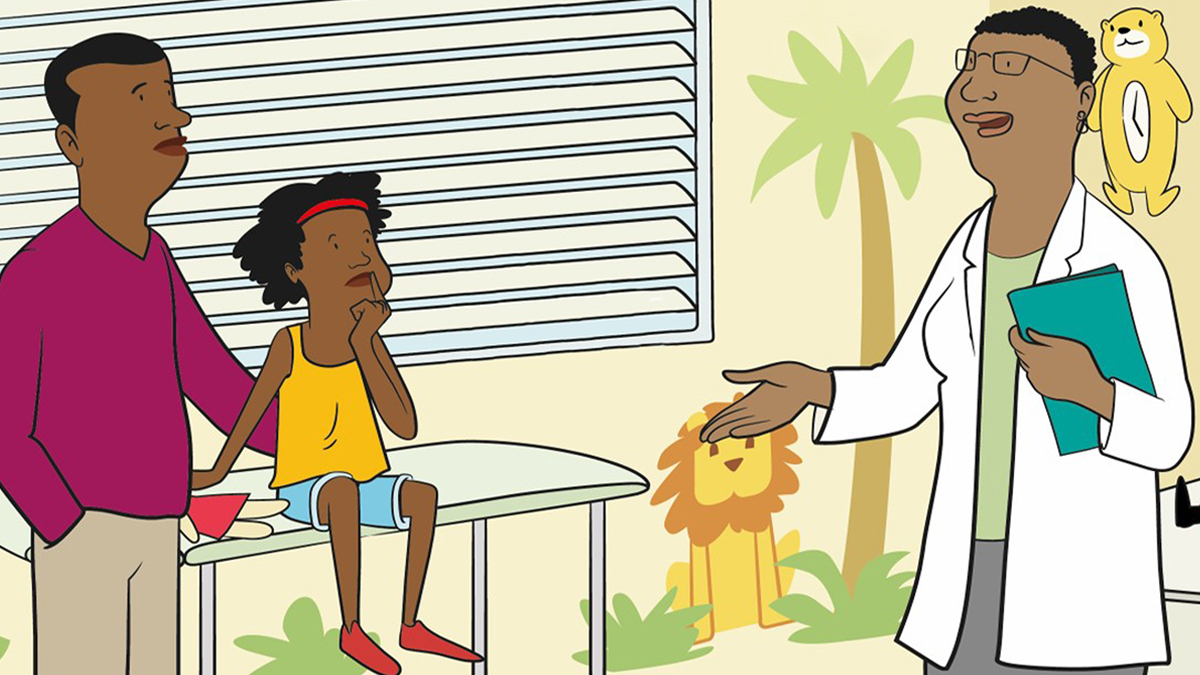Background
Taking part in a clinical trial can be a very emotional process for adults. That uncertainty is more complicated when adults are making those decisions for their children. Just as we need to research the effects of medicines in different ethnicities, races and sexes, we also need to study and understand the effects of medicines on children. This is to ensure medicines that are safe and effective are available for children.
One way we are trying to make decision-making a little easier is by making the process more informative.
Embedded content: https://twitter.com/LillyTrials/status/834387691055751168
In pediatric research, the consent form is signed by the legally authorized adult, this is called informed consent. The study is also explained to the child based on their level of understanding. This process is called study assent. This approach assures that both the adult and the child have a chance to understand what they are volunteering for. They can also ask questions and have the answers before study participation begins.
How we improved assent forms
We completely reworked our pediatric assent form and measured the impact of those changes on readability and health literacy. Health literacy is the ability to obtain, read, understand and use healthcare information. Here is what we learned:
Use input from patients and other qualified partners. As part of the revision process, we had input from experts at every step of the way . A team at UC-Berkeley’s Health Research for Action Center (HRA) assessed the original documents and helped revise the documents for improved health literacy. They also shared the first review of the revised documents with a group of six children, to assess areas that might still confuse people. We also worked with the International Children’s Advisory Network (iCAN) in the United States, Scotland and England, to get input directly from kids who have been in research studies.
Tailor the content to your audience. Different age groups and individuals will have different levels of understanding. Because of this we revised one assent template to be used with younger children ages 7–11 and a second assent template for older children ages 12–16 (see images below).
Use validated assessment tools. To ensure we had achieved our goal of making our consents clear and meaningful to children, we used a tool called the Suitability of Assessment Materials (SAM). The SAM rates health information material on readability and comprehension as “superior,” “adequate” or “not suitable.”
After the revisions and input from youth, the SAM scores for both assent forms improved from “adequate” to “superior.”

What else?
We learned valuable insights from the focus groups with the iCAN youth networks beyond the document alone:
Youth appreciated efforts to structure the assent in ways that allowed them to better read and understand the information.
Colorful photographs and images help to make the assent less intimidating and provide natural breaks in reading that aid comprehension.
Youth thought it was very important to understand who will benefit from the study.
Youth want to know what to expect if they choose to participate, including what will happen and how often.
Youth want to be thanked for considering participation even if they decline the study.
Separately, we conducted a one-year social media listening project. We assessed all publicly available data sources from news, forums, blogs, Twitter, Facebook, Google Plus, reviews and comments posted between August 1, 2015 and August 31, 2016. We found that the number of online conversations about pediatric research is relatively low. The average number of online posts per month hovered around 2,000. The sentiment expressed in these conversations was mainly neutral (79% overall) or negative (18%). To us, that kind of result opens up the possibility for a conversation worth having.
We’d like to hear your thoughts on pediatric research your hopes and your concerns, so drop us a line on Twitter or Facebook.
If you want to learn more about the informed consent process for adults, you can read our blog about informed consent.


